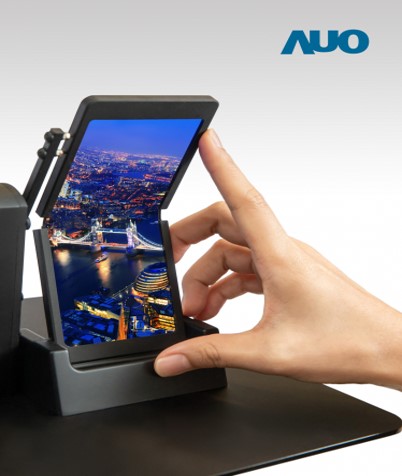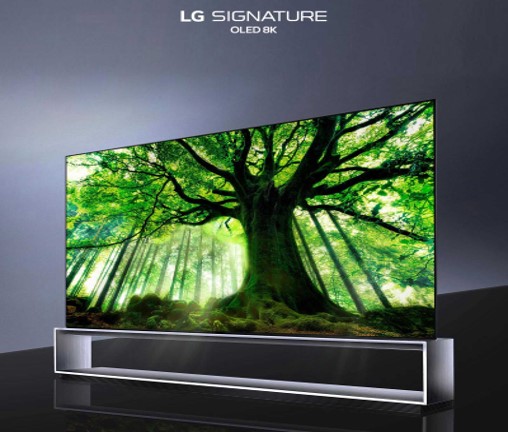There was a sense of maturity at OLEDs world Summit this year, which I attended in October 2019. The exuberance that was prevalent few years back when the iPhone X was first introduced, has been replaced by a sense of maturity as iPhone X sales and demand growth for the industry didn’t meet expectations.

Equipment, material, component and panel suppliers as well as researchers are now focusing more on industry challenges, emerging developments, competition from alternative display technologies and are working on new solutions to drive future growth.
Inkjet Printing is coming soon
The OLED industry has been discussing the potential for inkjet printing for years. This year many panel suppliers were able to demonstrate inkjet printed (IJP) OLED displays in various conferences and some will start mass production in 2020. First commercialization of soluble OLED panel is expected to be from JOLED’s new 5.5 Gen fab with mass production in 2020. Sumitomo Chemical, which presented at the OLED Summit about its latest development of soluble OLED materials, will supply OLED material to JOLED. According to the Sumitomo Chemical presentation:
- JOLED showed 21/27″ 4K (LTPS backplane, 4.5Gen fab),
- BOE demonstrated 55″ 4K (Oxide backplane, 8.5 Gen fab),
- CSOT exhibited 31″ 4K (Oxide backplane, 4.5G fab),
- AUO showcased 17.3″ 4K (LTPS backplane, 3.5G fab) and
- SDC presented an 18.2″ 4K (LTPS backplane, Gen 2.0 fab) ink jet printed OLED in 2019.
Ink jet printing can potentially have several advantages over the vacuum evaporation fabrication process for OLED.
- Production of a wide range of panel sizes and resolutions for various applications (Auto, Monitors, Medical, TVs and others)
- Helps with flexible panel design
- Enable effective material (ink) utilization (no waste)
- Provides a cost effective solution due to the simple process and stack
- Large size and Top emission OLEDs are possible
- Enhance OLED performance
- Enable new form factors
Kateeva, the leading suppliers of inkjet equipment for OLED, with 80% market shares in thin film encapsulation, is focusing on QD OLED and RGB OLED pixel printing for the next generation of mass production products. The company’s Yieldjet Flex product has produced more than 400 million mobile displays for smartphones. Kateeva’s presentation, quoting IHS data, showed that in the case of IJP 95% of solution material is used whereas, in VTE only 10% of source material is used. IJP can enable higher display performance by enabling top emission large panels; facilitate the 8K revolutions in OLED TV and increase optical performance.
Universal Display Corporation, the leader and provider of phosphorescent technology for OLED, proposed a new manufacturing process called Organic Vapor Jet Printing (OVJP) at the conference. They see “OVJP as the most cost effective patterning approach, a solvent-less, mask-less printing technology for depositing patterned small molecule organic materials to manufacture large area side by side RGB OLED TV using same proven material set as VTE”. Nanosys also presented that printed QDEL is one of the strongest candidates for next generation displays. The lifetime of CdSe QDEL is close to commercial requirements today and progress to commercialization will be rapid from this point on.
Suppliers are recognizing that there is a real need to reduce fixed and operating costs to make products more price-competitive to drive demand growth. Some are looking at inkjet printing as possible solutions. However, Inkjet printing process for OLED fabrication still faces many challenges such as material lifetime, efficiency issues, and limited resolutions.
AUO’s 17.3″ UHD 4K Inkjet printed OLED display technology
Still working to improve blue materials
The current inefficient blue is still a big problem for OLED display makers. OLED uses three emitters in red, green and blue. While red and green are efficient, blue is lagging behind. According to Cynora’s presentation, low efficiency blue results in higher power consumption and shorter battery lifetime especially in smartphones. A higher efficiency blue could reduce the organic layers in an OLED TV resulting in lower voltage being needed. For the next generation QD OLED TV (by Samsung) a high efficiency blue is essential as QD OLED devices only use blue. Cynora, is focusing on TADF solutions and created sky blue in April 2017. The company reported a display blue in 2018, and is now working as fast as it can to progress blue development.
Kyulux is focusing on TADF/Hyperfluorescence OLED emitting technology. The company presented that their materials can enable higher resolution, brighter image and less power consumption for smartphones. It can also reduce the emissive layers in OLED TV leading to lower costs (material and process) and lower power consumption. The company expects commercialization of blue in two to three years.
The industry is still working to improve blue materials. Currently none of the technologies have been able to deliver a high efficiency blue emitter with long lifetime.
Foldable form factors evolving
New designs for foldable smartphones still have many issues with foldable hinges, flexible covers, increased thickness and bulkier designs.
Samsung’s Galaxy Fold is an in-fold design while Royole’s is out-fold. Most of the foldable smartphones are currently ‘book type’ with Samsung’s in-folding design expected to have a dominant share in 2019. According to the DSCC presentation, starting from 2020, clamshell design could be the dominant form factor for foldable due to it having the smallest seam, hinge and foldable mark and that can translate to higher yields, lower costs, longer usable life and higher volumes. DSCC explained that “clamshells with ultra thin glass have higher hardness and better scratch resistance than cover film solutions and should also reduce risk and extend lifetime”.
The company is expecting clamshells to be the most popular type of foldable device for the next few years. Royole, the supplier of the first foldable smartphone, presented that foldable needs total solutions as module material innovations are needed at each level including cover film, touch, support layer, adhesive, polarizer and display. Strong partnerships and collaborations are needed between the display panel and system suppliers for success.
Google’s presentation focused on reliability guidelines for flexible displays to allow the evaluation of new failure modes such as crease, delamination, bucking, surface durability and mechanical impact. Intel’s presentation conveyed that laptops could have two foldable form factors based on usage: 2:1 detachable for 12 to 15″ size or foldable laptop for larger size (>=17″) display.
 AUO’s 5.6-inch foldable AMOLED touch display
AUO’s 5.6-inch foldable AMOLED touch display
New solutions for OLED TV
LG Display, the sole suppliers for OLED TV panels presented that investment, capacity and number of brands adopting OLED TVs are increasing. LG is doing a lot of promotion in conjunction with retailers to increase consumer awareness and acceptance. Several different strategies and architectures are now being considered for the production of OLED TV. Inkjet printed OLED TV is expected in the near future. Inkjet printed OLED and QLED displays were shown at various conferences in 2019.
 The world’s first LG OLED 8K TV
The world’s first LG OLED 8K TV
According to DSCC’s forecast, OLED panel are expected to gain share in most display application categories especially on a dollar basis with significant room for growth in most applications. If a sense of maturity will lead suppliers to focus more on new solutions and cost reductions, it could drive demand growth and increase shares in the next few years. SD
Sweta Dash is the founding president of Dash-Insights, a market research and consulting company specializing in the display industry. For more information, contact [email protected] or visit www.dash-insight.com

